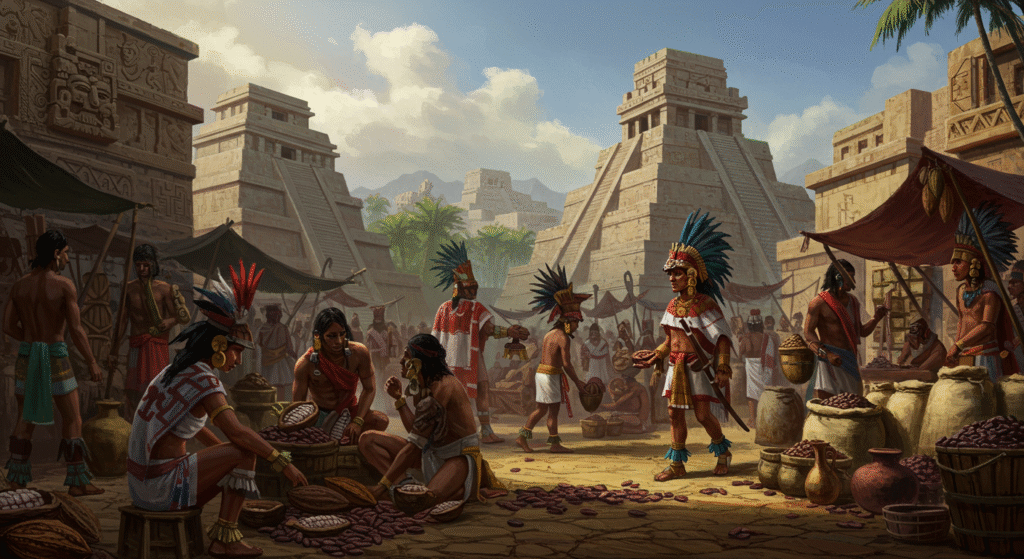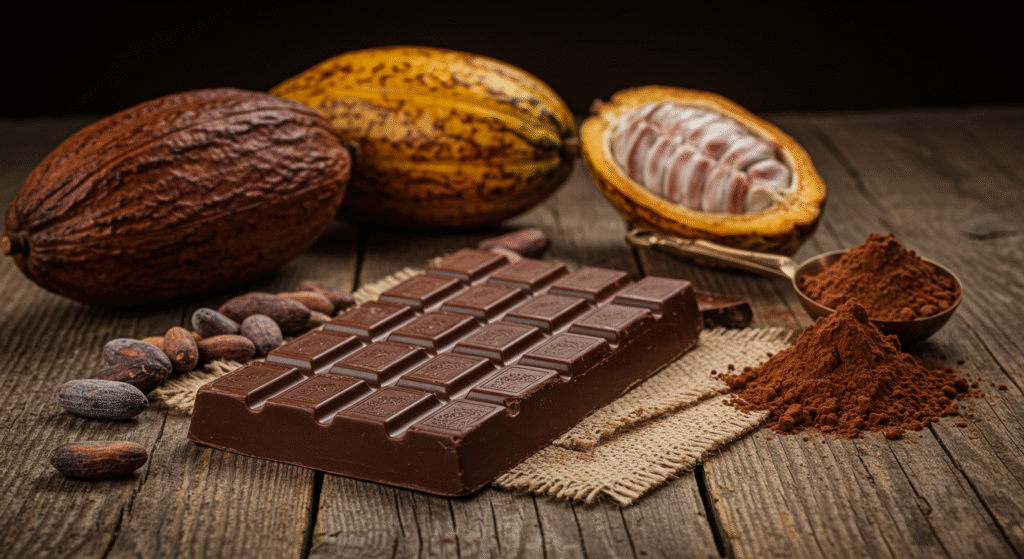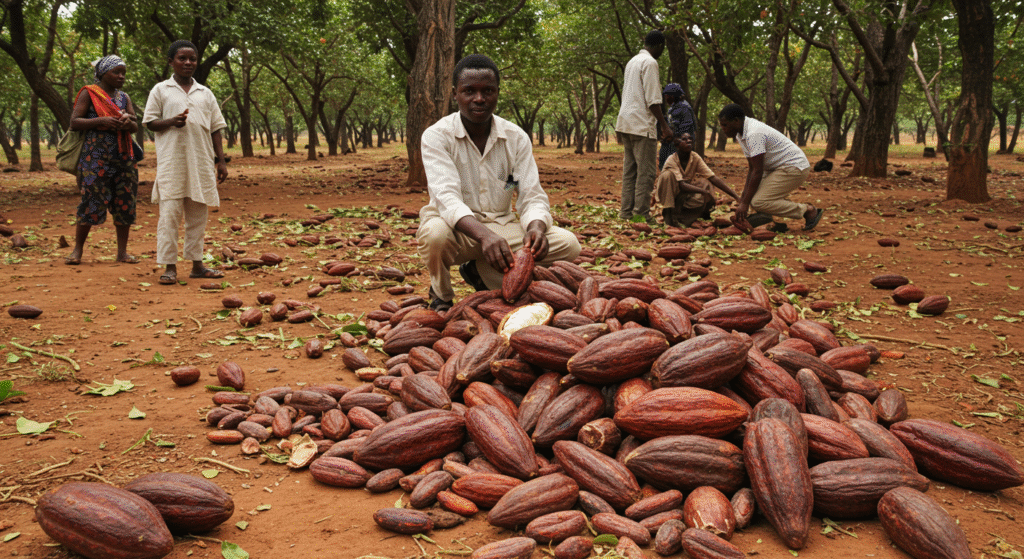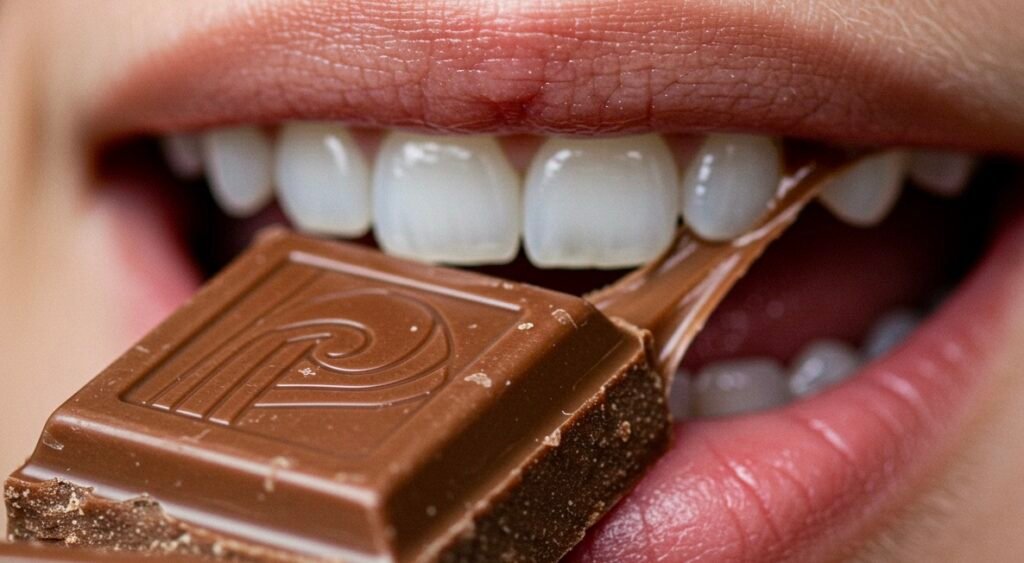Most of us think we know chocolate. It’s sweet, it’s indulgent, and it’s one of the world’s most beloved treats. But chocolate is far more than a dessert. It carries centuries of history, fascinating science, and even cultural influence that may surprise you. The next time you enjoy a chocolate bar, you’ll appreciate it a little more after learning these ten surprising chocolate facts.
1. Chocolate Was Once Used as Currency

Long before chocolate became a sweet snack, it was valuable enough to serve as money. The ancient Mayans and Aztecs valued cacao beans so highly that they used them to trade for goods like food and clothing. According to the Smithsonian Magazine, cacao beans were so prized that counterfeiting became common, with people trying to make fake beans from clay.
This shows that chocolate wasn’t always just a food — it was an economic cornerstone in early civilizations. Imagine paying rent or buying groceries with cacao beans. That gives new meaning to the phrase “worth its weight in gold.”
2. The First Chocolate Bar Was Made in the 1800s

Chocolate hasn’t always been available in the neat bar form we enjoy today. For most of history, cacao was consumed as a bitter drink mixed with spices or water. It wasn’t until 1847 that the first solid chocolate bar was created by Joseph Fry in England. According to Cadbury’s history archives, Fry combined cocoa butter, cocoa powder, and sugar to create a moldable mixture.
This innovation laid the groundwork for the modern chocolate industry. Without Fry’s experiment, we might still be drinking chocolate instead of eating it.
3. White Chocolate Isn’t Really Chocolate

White chocolate often divides opinions. Some people love its creamy sweetness, while others say it doesn’t count as “real chocolate.” Technically, critics are correct. White chocolate doesn’t contain cocoa solids — the part of the cacao bean that gives chocolate its characteristic flavor. Instead, it is made from cocoa butter, sugar, and milk.
The US Food and Drug Administration defines standards for white chocolate, requiring at least 20% cocoa butter but no cocoa solids. That means while it carries the name, it lacks the key component that makes dark and milk chocolate true chocolate.
4. Chocolate Can Boost Brain Function
Many people reach for chocolate to lift their mood, but its benefits go deeper. Dark chocolate, in particular, is rich in flavonoids — plant compounds that have been shown to improve blood flow to the brain. A 2017 study published in Frontiers in Nutrition found that flavonoid consumption could enhance memory, attention, and processing speed.
This doesn’t mean a candy bar will turn you into a genius overnight, but moderate consumption of high-cocoa chocolate may support long-term brain health.
Read our article “Is Dark Chocolate Healthy?“
5. The World’s Largest Producer of Cocoa Is Côte d’Ivoire

When you bite into a chocolate bar, chances are the cocoa came from West Africa. Côte d’Ivoire (Ivory Coast) is the world’s leading cocoa producer, responsible for more than 40% of global supply. According to the World Cocoa Foundation, millions of smallholder farmers in Côte d’Ivoire and Ghana depend on cocoa cultivation for their livelihoods.
This fact highlights the global importance of chocolate. It’s not just a sweet treat but a major driver of economies and livelihoods in producing countries.
6. Chocolate Contains Over 600 Flavor Compounds
Wine is often praised for its complex flavors, but chocolate actually contains more flavor compounds than red wine. Scientists have identified more than 600 distinct compounds in chocolate, compared to about 200 in wine. According to the Institute of Food Technologists, this complexity explains why chocolate pairs so well with a wide variety of foods and beverages, from fruit to coffee to cheese.
Next time you taste a piece of dark chocolate, try slowing down to notice the notes — nutty, fruity, floral, or earthy. Chocolate tasting is an art as much as wine tasting.
7. The Swiss Eat the Most Chocolate Per Capita
If you think you’re a chocoholic, you might want to compare yourself to the Swiss. On average, each person in Switzerland consumes more than 19 pounds of chocolate per year. Data from Statista shows that Swiss chocolate consumption consistently leads the world.
This comes as no surprise given Switzerland’s role in refining chocolate-making techniques, including the invention of milk chocolate by Daniel Peter and the conching process by Rodolphe Lindt.
8. Chocolate Has a Melting Point Close to Body Temperature

One of the reasons chocolate feels so luxurious in the mouth is its melting point. Cocoa butter melts between 93°F and 97°F, just below human body temperature. That’s why chocolate melts so smoothly when it touches your tongue.
The National Confectioners Association explains that this property makes chocolate unique compared to other confections. The melt-in-the-mouth sensation is part of what makes chocolate irresistible.
9. Dark Chocolate May Support Heart Health
Research suggests that moderate dark chocolate consumption may support cardiovascular health. Cocoa flavonoids can help lower blood pressure, improve circulation, and reduce the risk of heart disease. A review published in the British Journal of Nutrition highlighted these potential benefits, though it also noted that portion size and sugar content matter.
This doesn’t give free rein to overindulge, but it does suggest that a square or two of dark chocolate could be good for your heart.
Read our article about Dark vs. Milk Chocolate: Health Differences
10. Chocolate Is Linked to Space Exploration

It might surprise you to learn that chocolate has traveled beyond Earth. NASA has included chocolate in astronauts’ food supplies since the early space missions. According to NASA’s official site, chocolate provides a morale boost as well as energy in the challenging environment of space.
This fact shows that chocolate isn’t just a treat for Earth — it’s a comfort food powerful enough to be packed for outer space.
Final Thoughts
Chocolate is more than just candy. It carries history, science, culture, and even space travel within its story. From being used as currency to boosting brain power, chocolate’s versatility makes it endlessly fascinating. Understanding these facts not only deepens your appreciation but also sparks conversations the next time you share chocolate with friends.
As you enjoy your next bite, remember that chocolate connects you to centuries of tradition, global communities, and even astronauts circling the Earth.
Our Authority Sources
- Smithsonian Magazine – History of graham crackers and cacao currency
- Cadbury UK – History of the first chocolate bar
- FDA – White chocolate standards
- Frontiers in Nutrition – Flavonoids and brain function
- World Cocoa Foundation – Cocoa production
- Institute of Food Technologists – Flavor compounds in chocolate
- Statista – Global chocolate consumption
- National Confectioners Association – Cocoa butter and melting point
- British Journal of Nutrition – Dark chocolate and heart health
- NASA – Chocolate in space exploration

